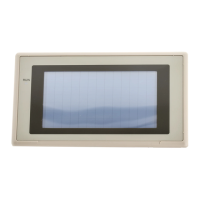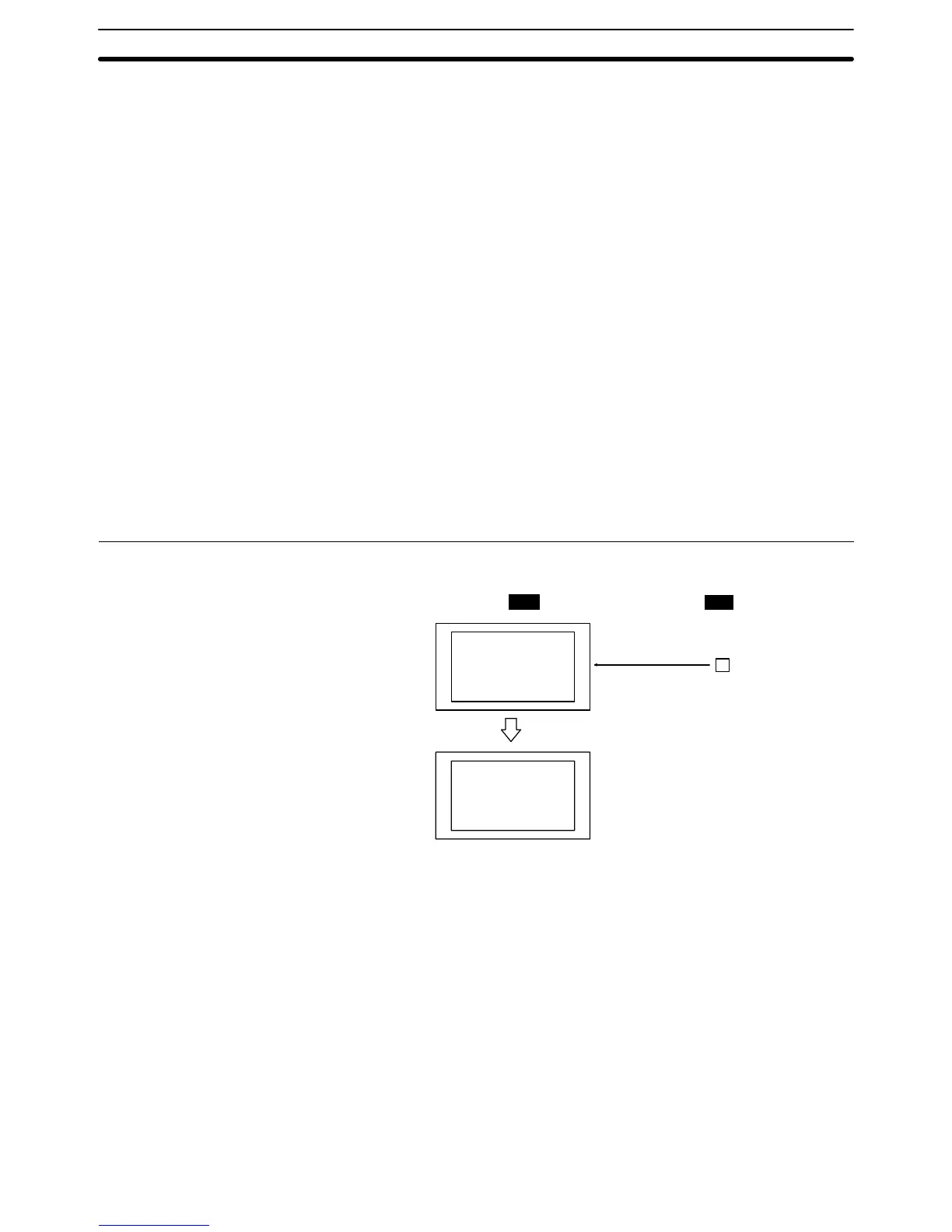5-1SectionExamples of Actual Applications of Direct Access
402
5-1 Examples of Actual Applications of Direct Access
Some examples that will give you an idea of how to actually apply the functions
of the PT such as those indicated below are presented here.
• Continually monitoring a specific PC bit and displaying an alarm when it comes
ON ...... page 402
• Changing display contents in accordance with PC bit status ..... page 403
• Displaying online help with a touch switch ..... page 405
• Continually monitoring a specific PC bit and displaying a message on a win-
dow when it comes ON ..... page 405
• Continuously reading out the contents of a PC word and displaying a trend
graph by backtracking ..... page 407
• Displaying the day of the week using the clock data in the PT ..... page 408
• Enabling and disabling a touch switch with an interlock bit .... page 409
• Scaling the contents of a PC word and displaying the result..... page 410
In these examples, only the necessary settings are shown. Make the unspeci-
fied settings according to your requirements. In some of the examples, colors
other than black and white are used for the display colors; note that these exam-
ples can be applied even with monochrome type PTs, for example by setting the
display of black and white in reverse video.
For the method for creating screens with the Support Tool, refer to the NT-Series
Support Tool Version 4. for Windows Operation Manual (V061-E1-).
Continually Monitoring a Specific PC Bit and Displaying an Alarm When It Comes ON
Displaying a screen with TEMPERATURE ABNORMAL in black on a red back-
ground when the monitored PC bit comes ON.
1
ON
TEMPERATURE
ABNORMAL
Screen switched
Bit
PCPT
1, 2, 3... 1. Set the properties of the screen displayed when the bit comes ON as fol-
lows:
• Background color: Red
2. Register a fixed display text element for the screen set in (1) as follows:
• Text: TEMPERATURE ABNORMAL
• Foreground Color: Black
• Background color: Transparent
3. Make the following settings for any bit memory table entry.
• PC Address: Number of the PC bit to be monitored
• Function: Switch screen
• Screen No.: Number of the screen set in (1) and (2)
Suggestions
• In this method, after switching to the error screen, the error screen remains dis-
played even if the status of the monitored PC bit changes back from ON to OFF
Example:

